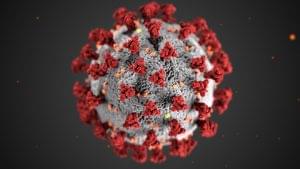This is how Hungarian researchers model epidemics
At first glance, few things seem more distant than a flu virus and a self-driving car. One spreads invisibly among people, the other tries to navigate traffic with sensors and rules. Yet they have something in common: both operate in complex, dynamic, and difficult-to-predict systems. Researchers at HUN-REN SZTAKI’s Systems and Control Theory Research Laboratory (SCL) are working on understanding exactly such systems – and on how to react quickly and effectively even when we cannot influence all circumstances.
 At HUN-REN SZTAKI, the Systems and Control Theory Research Laboratory is primarily known for its research on self-driving cars and drones. The lab develops mathematical models that help machines make safe decisions without human intervention, even in uncertain, constantly changing environments. During the COVID-19 pandemic, however, the same way of thinking – the theory of complex, dynamic systems, feedback and control – has proven useful in a new area: understanding and managing the spread of epidemics.
At HUN-REN SZTAKI, the Systems and Control Theory Research Laboratory is primarily known for its research on self-driving cars and drones. The lab develops mathematical models that help machines make safe decisions without human intervention, even in uncertain, constantly changing environments. During the COVID-19 pandemic, however, the same way of thinking – the theory of complex, dynamic systems, feedback and control – has proven useful in a new area: understanding and managing the spread of epidemics.
At the beginning of the pandemic, researchers around the world were trying to interpret the ever-changing data. Mathematicians at the University of Szeged created models that describe how the virus spreads. Building on these, the laboratory’s researchers examined what interventions could be used to control the course of the epidemic.
“In a sense, we can manage an epidemic in the same way as a complex technical system – a power plant or even the transportation of a large city,” says Tamás Péni, a researcher at SCL. “Of course, the virus itself cannot be controlled, but the way we respond to it – when, with what means, and to what extent we intervene – can.”
The models were used to estimate the impact that restrictions, testing, and later vaccinations could have on infection rates and hospital capacity. The goal was not simply to predict, but to strategically plan responses to the epidemic: to find solutions that protect people’s health while also mitigating the economic and social consequences. From an engineering perspective, this is an optimization task: finding the balance between too subtle and too drastic intervention.
Simplifying complex systems with artificial intelligence
A pandemic is not only a biological process, but also a social one. People move, meet, change their habits, or even break the rules.
When modeling an epidemic, it is possible to simulate the functioning of an entire city. This is called a multi-agent model, in which each resident is represented by a “digital twin”, with their own daily routine and random encounters. These models try to reproduce reality as accurately as possible: every shopping trip, trip to school or family visit can start a new chain of infection.
Such detailed models show how infections develop in the web of human relationships. However, precisely because of their detail, they are slow and difficult to handle, so they are not suitable for supporting quick decisions.
That is why the SCL researchers created a much simpler model based on neural networks that learns from data from detailed simulations. Instead of simulating millions of people, this solution condenses the behavior of the epidemic into mathematical relationships. It does not describe the details of every single event, but it shows the essential patterns – for example, how the epidemic responds to different interventions – and it can calculate all this quickly and efficiently.
This is how uncertainty is handled
Even the best model is not perfect, especially since in real life epidemic data is often incomplete, arrives late, and can sometimes even be contradictory. The impact of decisions can often only be measured weeks later. Recognizing and handling such uncertainties is one of the foundations of regulation. The work of HUN-REN SZTAKI SCL helped to determine what the minimum intervention that needs to be done is, and what the maximum that is still acceptable from an economic and social perspective is. In this way, the control theory approach helped to make the fundamentally chaotic epidemic situation more transparent and predictable. “In such cases, we are trying to hit a moving target” – says Tamás Péni. “Today we calculate a forecast, but in a week new data will come in and everything will have to be recalculated.”
Related news
Strict regulations and measures remain in place due to the COVID-19 virus
🎧 Hallgasd a cikket: Lejátszás Szünet Folytatás Leállítás Nyelv: Auto…
Read more >The eradication of colonies infected with RSZKF disease has been completed
🎧 Hallgasd a cikket: Lejátszás Szünet Folytatás Leállítás Nyelv: Auto…
Read more >People in Slovakia have started hoarding milk
🎧 Hallgasd a cikket: Lejátszás Szünet Folytatás Leállítás Nyelv: Auto…
Read more >Related news
The HORECA sector joins forces with Alimentaria+Hostelco to mark the future of hospitality
🎧 Hallgasd a cikket: Lejátszás Szünet Folytatás Leállítás Nyelv: Auto…
Read more >Challenges of the retail sector: retail has become more crisis-resistant
🎧 Hallgasd a cikket: Lejátszás Szünet Folytatás Leállítás Nyelv: Auto…
Read more >How to avoid the hassles of online shopping?
🎧 Hallgasd a cikket: Lejátszás Szünet Folytatás Leállítás Nyelv: Auto…
Read more >






